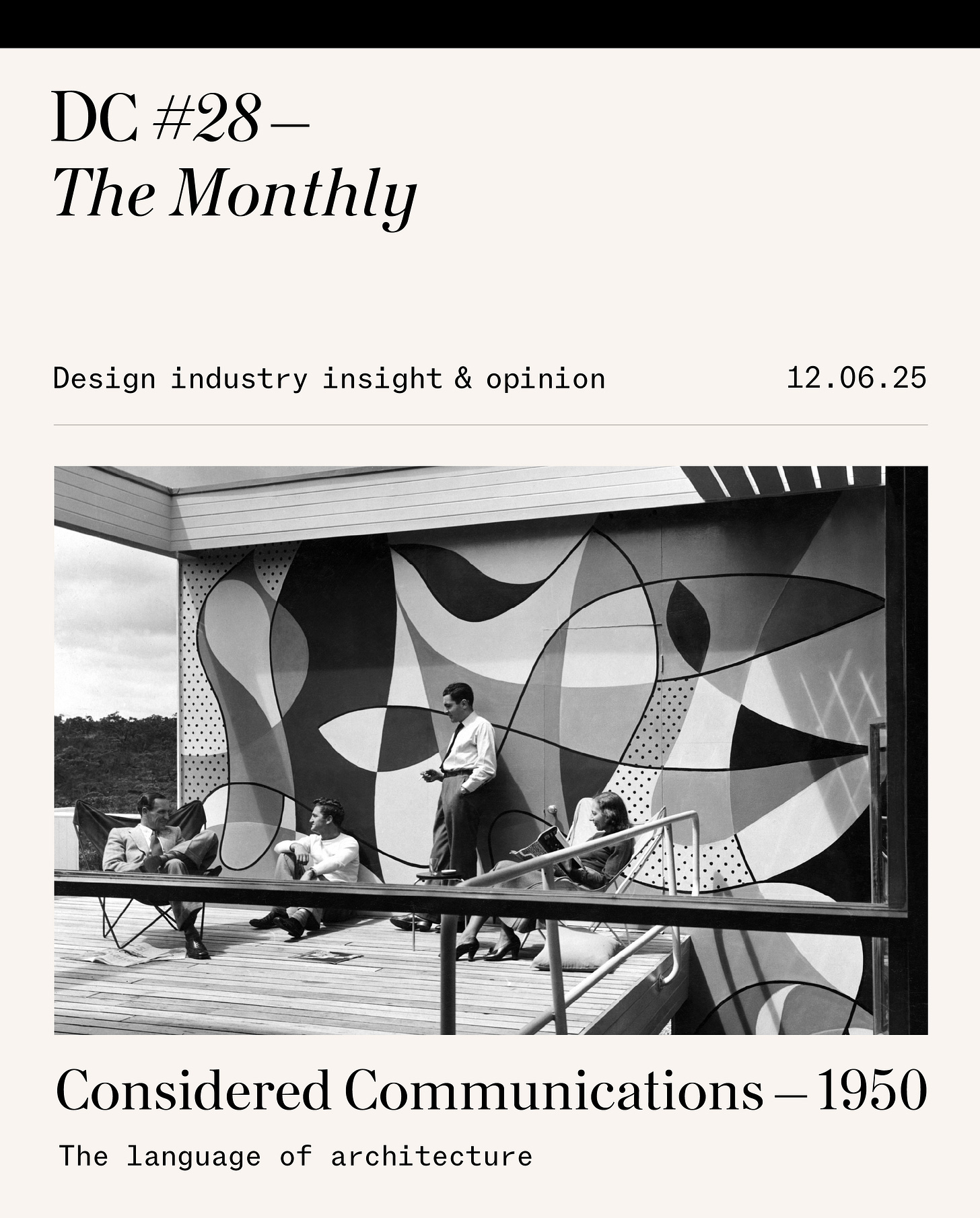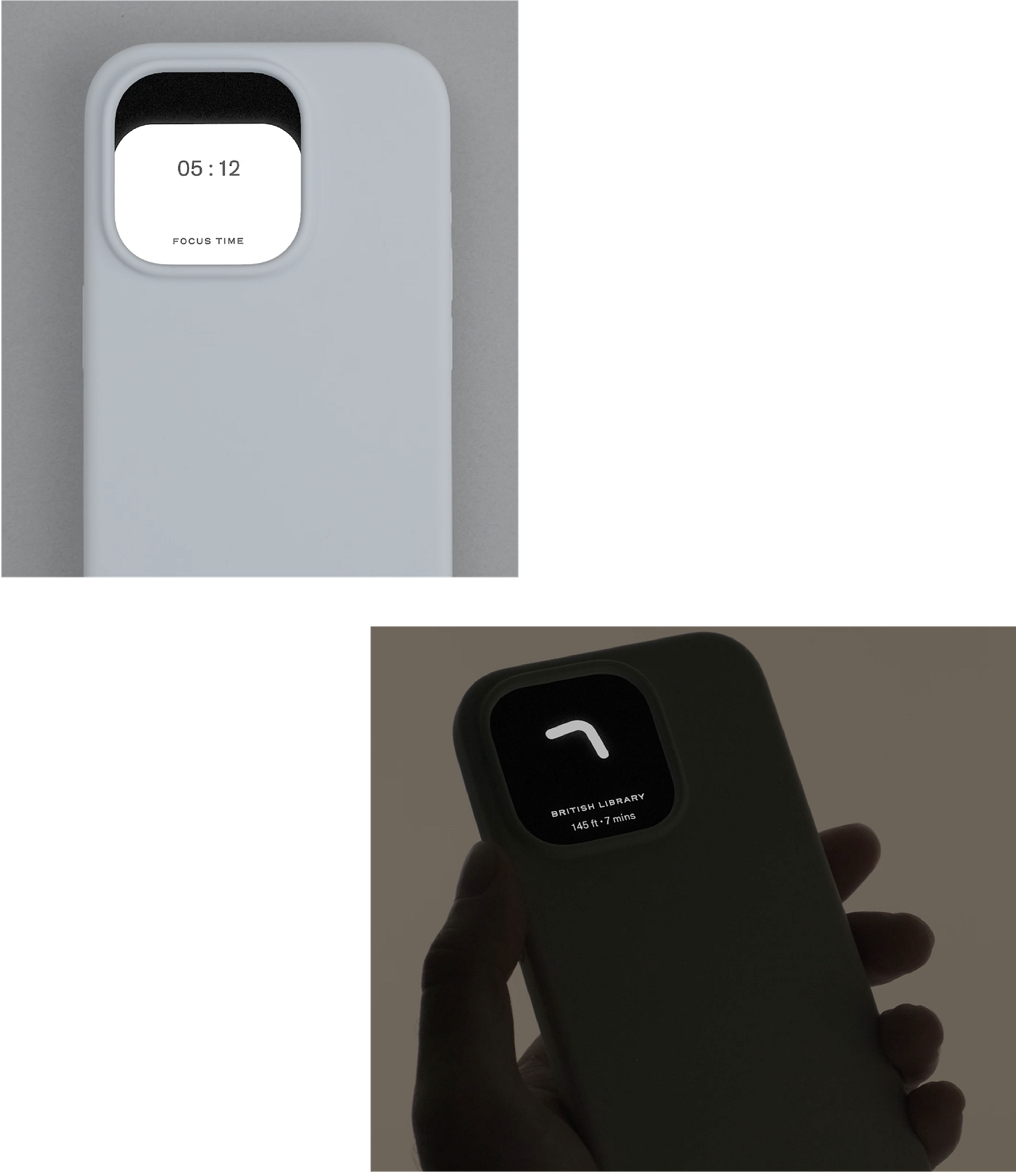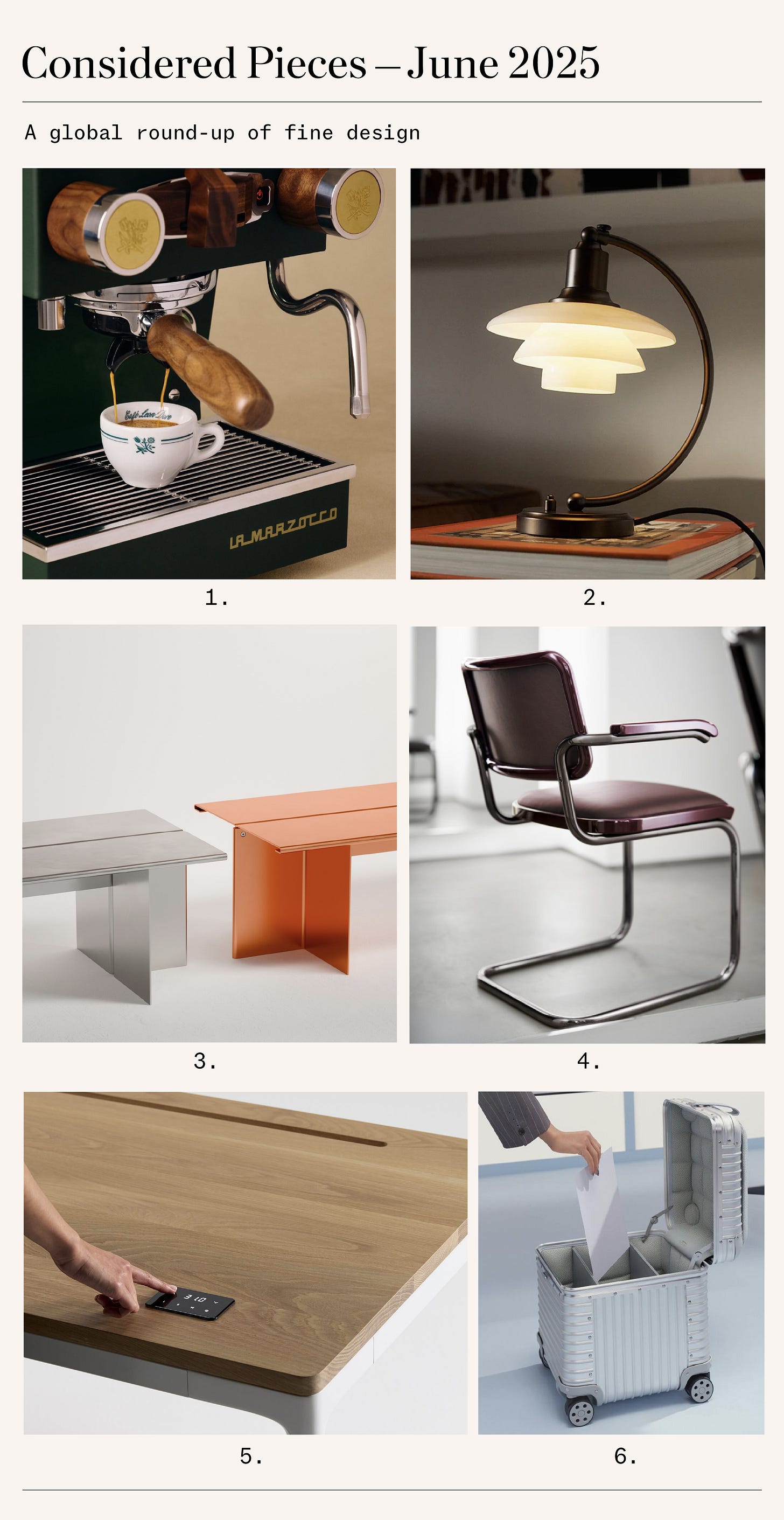Design Considered #28 – Monthly Edition
Tips on architectural writing. A plea for calmer technology and a round-up of fine design.
#01 - Opening Thought
Architects seem to like words as much as writers do. At the recently opened 2025 Venice Architecture Biennale, architects trade written language with a reverence equal to their designs across sprawling exhibitions. But while good writers write for everyone, good architects tend to write for other good architects. The result is an event awash with placards that are nearly indecipherable to non-professionals.
Thankfully, architects speak with poetics and punch when asked to talk, not write, about their craft. Tip for Biennale visitors: skip the wall texts. Ask someone nearby what’s going on. A good architect in the room will gladly share a considered explanation.
Not all examples of writing at the event’s exhibitions are tough reads. At Migrating Modernism, a detailed showcase of the life and work of Austrian-born Australian maestro Harry Seidler (pictured, 3rd from left, at the Rose Seidler House he designed in Sydney)—who trained under Walter Gropius, Josef Albers, and Oscar Niemeyer—vivid letters from Seidler, his wife Penelope, and his global network transport you to a more romantic era, when correspondence was lovingly handwritten and infused with personality, warmth, and insight.
Migrating Modernism. The architecture of Harry Seidler is co-organised by SMAC and the University of Sydney’s Chau Chak Wing Museum. It’s on view until 13 July 2025.
#02 - Calm Technology
Part of the allure of digital tools like OpenAI’s ChatGPT is the supreme simplicity of the user experience. Thanks to the wizardry of large-language models, a basic, text-based setup is all one needs to type a request and receive a clear, often spot-on response within seconds. This efficient journey is the polar opposite of ‘Googling’ a recipe or an itinerary for restaurants in a city you might be visiting, then sifting through endless results and navigating websites cluttered with noisy advertising technology to find your answer. For now, at least, we’re exploring a new, cleaner territory in the digital space.
The first physical products with genuine global impact in this soon-to-dominate-our-lives space may be crafted by the visionary behind the iPhone and MacBook, Apple’s former chief design officer, Jony Ive. In a teaser film for io, a new hardware initiative which sees Ive’s design firm LoveFrom developing technology for Sam Altman’s OpenAI, Ive reflects: “Everything I have learned over the last 30 years has led me to this place and this moment.”
For clues on what this moment could look like, London-based studio Special Projects offers a compelling example with Aperture. This pared-back concept, explained beautifully here, quietly transforms your smartphone into something purposeful and delightfully straightforward. Aperture works by physically overlaying your phone’s screen with a minimal, intuitive ‘case,’ while the software is navigated by a voice-controlled UI that offers concise, step-by-step guidance without unnecessary visual clutter. The intentionally quiet execution reflects Special Projects' ethos of creating calm, human-centered tech. “We wanted it to have just enough whimsy to feel magical, without being gimmicky,” explains co-founder Adrian Westaway.
The subtle genius here lies in Aperture’s human-first, empathetic approach—taming digital complexity rather than compounding it. When the iPhone launched over fifteen years ago - an iPod, web browser, and mobile phone rolled into one - it was both loved and loaded with promise. Today, however, the same device often feels like a portal to algorithmic distraction and brain rot that’s monopolising our attention. I hope this next generation of physical tech tools will be thoughtfully engineered to restore focus and enrich our lives.
#03 - Design Selection
A tasteful twist on the compact La Marzocco espresso machine, the (1) Linea Micra “Aimé Leon Dore” Edition, comes in a classic racing green colour with brass and walnut accents. It’s guaranteed to age gracefully. Similarly, the (2) PH 2/2 Luna Table Lamp revives Poul Henningsen’s 1930s classic Danish design for Louis Poulsen in a handsome ‘aged’ brass finish. Layered opal glass shades atop the pre-patinated stem deliver an intimate, glare-free glow.
Minimalism meets metalwork in a new piece from uber-talented Canadian industrial designer Nathan Martell. The (3) Seam Table showcases powder-coated steel planes that are artfully folded and hemmed, exposing joinery that turns a simple surface into a conversation piece. The (4) S 64 JS Chair by Thonet and Jil Sander reimagines Marcel Breuer’s tubular steel icon. A stand-out piece from this year’s Milan Design Week, the celebrated German fashion designer somehow adds to the timelessness of this chair’s cantilevering form through various sleek, glossy finishes and leather and canework options. More restrained, but no less resolved, the (5) eFloat Quattro Desk by US-headquartered Humanscale elevates the sit-stand category. Unlike most two-leg sit-stand desks, its uncommon four-leg configuration ensures greater lateral stability, especially at full extension. At the same time, quiet electronic lifts and built-in cable management provide a refined, clutter-free workspace.
Finally, a lucky few will get their hands on the limited edition of this seriously cute (6) Aluminium Stool, part of a unique collaboration between European design giants Vitra and German luggage maker Rimowa. A refined office organiser that doubles up as a mobile perch, there’s still time to enter the draw for an option to buy here.







Wow! Thank you for introducing me to that aperture project - I won't look at my case the same way now!